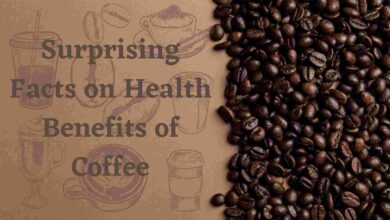When you experience a medical emergency, you want first responders to be well-versed in basic life support. The knowledge and skill of these people might mean the difference between life and death. Let’s explore what is a BLS certification and how does it help save lives.
This Article Contains
What Is Basic Life Support?
Basic life support (BLS) is the care provided by an emergency responder. When a person suffers from a medical emergency such as a cardiac event, breathing difficulties, or a blocked airway, they will require basic life support.
The first responder must identify the problem and offer the proper care. They might need to provide cardiopulmonary resuscitation (CPR), use an external defibrillator, or unblock an airway. The correct method of delivering this care requires knowledge and skill.
How Does Basic Life Support Save Lives?
Basic Life Support concentrates on the patient’s continued circulation and respiration until advanced life support is available. This means that first responders ensure that the patient’s heart is still beating and they are breathing until the paramedics arrive or until the patient reaches the hospital.
Patients who have received proper basic life support care will have much higher oxygen levels. These patients will stand a much better chance of a successful revival and survival. They will receive more advanced life support when they reach a medical facility with the proper equipment.
BLS Certification
You can receive your BLS certification from organizations such as the American Red Cross or the American Heart Association. You can also receive your certification online. The certification is valid for two years. You can complete the basic life support training in about four to five hours.
Healthcare professionals and emergency first responders must have their basic life support training. Any individual interested in learning basic life support can take the training.
Basic Life Support Skills
Students studying basic life support skills will learn about cardiopulmonary resuscitation, using an external defibrillator, and how to restore respiration.
CPR
Students will be taught how to identify patients experiencing a cardiac event, and they can then perform CPR until emergency medical responders arrive. When CPR is appropriately given, the patient’s chances of survival significantly increase.
If a patient is not breathing or breathing irregularly, lay them on their back and check the airway. You should perform thirty chest compressions and then two rescue breaths.
You must place one hand on the other and hold it tightly. It is essential to keep your arms straight while pushing with the heel of your hand. Compressions should be applied to the center of the chest just below the breast. It would be best if you were compressing about two inches at a consistent speed of about one hundred times per minute.
Tilt the patient’s head while lifting the chin when you have done thirty compressions. Pinch their nose and put your mouth on theirs. It would be best if you blew hard enough to make their chest rise. If their chest does not rise, try repositioning the head and try again. There may be an airway blockage if there is no movement with the second breath.
It is necessary to continue CPR until medical help arrives or an external defibrillator is set up and ready to be used. CPR for children and infants is different and will also be covered in training.
AED
The automatic external defibrillator (AED) can save a life during a sudden cardiac event. You must use it correctly to provide the best emergency care.
Once the AED has been turned on, remove the patient’s clothing and place the pads on the chest. You need to put one pad on the upper right side of the chest and the other on the lower left side below the armpit. Ensure that the pads are connected to the AED.
Make sure there is no one touching the patient and let the AED study the patient’s heart rhythm. The AED will determine if the person requires a shock to stabilize the heart rhythm. Again, ensure no one touches the patient and hit the “shock” button if needed.
Once a shock has been delivered or if none was required, CPR should be started and continued until emergency medical responders arrive.
Airway Blockage
Recognizing that someone is choking requires immediate action. The first thing you should do is stand slightly behind the person to the side. Lean the person forward and hold their chest with your hand. With your hand’s heel, apply sharp blows between the shoulder blades.
If the back blows do not dislodge the obstruction, wrap your arms around the person from behind. Lean the person forward and pull your arms in and up. These are referred to as abdominal thrusts. These thrusts were once known as the Heimlich maneuver, but after some controversy, they were renamed abdominal thrusts. You can repeat these thrusts up to five times.
Advanced First Aid
The training will also teach emergency care for heat-related events, hypothermia, neck and head injuries, allergies, bone breaks, and wounds. They will also teach people techniques for pain management and infection prevention.
Procedure for Basic Life Support
Offering someone in crisis the gift of life is not something to be taken lightly. You can keep them alive until they receive the care they need. You will need to follow the same specific steps for every emergency.
- Check for a response by tapping the person
- Tilt the head while lifting the chin, opening the airway
- Check the person’s breathing and circulation.
- If there is no pulse, start CPR immediately
- The type of CPR will depend on the age of the patient.
- It is best to perform the majority of the CPR to minimize the amount of disruption to the patient.
- Send for an automated external defibrillator
- Use the AED and then continue with CPR until medical help arrives
Final Thoughts
First Aid is the knowledge you need to treat minor medical events. A BLS certification is required to attend critical medical emergencies that could lead to death. A four-hour course could give you the skills to save a life.
Learn about how to be safe stay fit during winter, don’t forget to share with your favorite people 🙂






